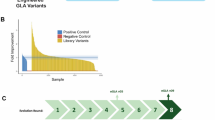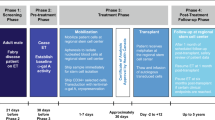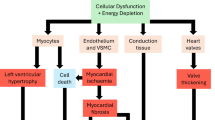Abstract
Fabry disease is a genetic disorder caused by a deficiency of α-galactosidase, exhibiting a wide clinical spectrum, from the early-onset severe ‘classic’ form to the late-onset mild ‘variant’ one. Recent screening of newborns revealed that the incidence of Fabry disease is unexpectedly high, and that the genotypes of patients with this disease are quite heterogeneous and many novel mutations have been identified in them. This suggests that a lot of Fabry patients will be found in an early clinical stage when the prognosis is obscure and a proper therapeutic schedule for them cannot be determined. Thus, it is significant to predict the clinical phenotype of this disease resulting from a novel mutation. Herein, we proposed a phenotype prediction model based on sequential and structural information. As far as we know, this is the first report of phenotype prediction for Fabry disease. First, we investigated the sequential and structural changes in the α-galactosidase molecule responsible for Fabry disease. The results showed that there are quite large differences in several properties between the classic and variant groups. We then developed a phenotype prediction model involving the decision tree technique. The accuracy of this prediction model is high (86%), and Matthew's correlation coefficient is also high (0.49). The phenotype predictor proposed in this paper may be useful for determining a proper therapeutic schedule for this disease.
Similar content being viewed by others
Log in or create a free account to read this content
Gain free access to this article, as well as selected content from this journal and more on nature.com
or
References
Desnick, R. J., Ioannou, Y. A. & Eng, C. M. Alpha-galactosidase A deficiency: Fabry disease, in The Metabolic and Molecular Bases of Inherited Disease 8th edn (eds, Scriver, C.R., Beaudet, A.L., Sly, W.S., & Valle, D.), 3733–3774 (McGraw-Hill, New York, NY, 2001).
Spada, M., Pagliardini, S., Yasuda, M., Tukel, T., Thiagarajan., G., Sakuraba, H. et al. High incidence of later-onset Fabry disease revealed by newborn screening. Am. J. Hum. Genet. 79, 31–40 (2006).
Eng, C. M., Banikazemi, M., Gordon, R. E., Goldman, M., Phelps, R., Kim, L. et al. A phase 1/2 clinical trial of enzyme replacement in Fabry disease: pharmacokinetic, substrate clearance, and safety studies. Am. J. Hum. Genet. 68, 711–722 (2001).
Eng, C. M., Guffon, N., Wilcox, W. R., Germain, D. P., Lee, P., Waldek, S. et al. Safety and efficacy of recombinant human alpha-galactosidase A replacement therapy in Fabry's disease. N. Engl. J. Med. 345, 9–16 (2001).
Schiffmann, R., Murray, G. J., Treco, D., Daniel, P., Sellos-Moura, M. Myers, M. et al. Infusion of alpha-galactosidase A reduces tissue globotriaosylceramide storage in patients with Fabry disease. Proc. Natl Acad. Sci. USA 97, 365–370 (2000).
Yam, G. H., Bosshard, N., Zuber, C., Steinmann, B. & Roth, J. Pharmacological chaperone corrects lysosomal storage in Fabry disease caused by trafficking-incompetent variants. Am. J. Physiol. Cell Physiol. 290, C1076–C1082 (2006).
Sugawara, K., Ohno, K., Saito, S. & Sakuraba, H. Structural characterization of mutant alpha-galactosidases causing Fabry disease. J. Hum. Genet. 53, 812–824 (2008).
Kyte, J. & Doolittle, R. F. A simple method for displaying the hydropathic character of a protein. J. Mol. Biol. 157, 105–132 (1982).
Breiman, L., Friedman, J. H., Olshen, R. A. & Stone, C. J. Classification and Regression Trees (Wadsworth Inc., Belmont, 1984).
Matthews, B. W. Comparison of the predicted and observed secondary structure of T4 phage lysozyme. Biochim. Biophys. Acta. 405, 442–451 (1985).
Acknowledgements
This work was supported by the Japan Science and Technology Agency (HS); the Japan Society for the Promotion of Science (HS); the Ministry of Health and Welfare of Japan (HS); the High-Tech Research Center Project of the Ministry of Education, Science, Sports and Culture of Japan (HS); and by the Program for Promotion of Fundamental Studies in Health Sciences of the National Institute of Biomedical Innovation (HS).
Author information
Authors and Affiliations
Corresponding author
Additional information
Supplementary Information accompanies the paper on Journal of Human Genetics website (http://www.nature.com/jhg)
Supplementary information
Rights and permissions
About this article
Cite this article
Saito, S., Ohno, K., Sese, J. et al. Prediction of the clinical phenotype of Fabry disease based on protein sequential and structural information. J Hum Genet 55, 175–178 (2010). https://doi.org/10.1038/jhg.2010.5
Received:
Revised:
Accepted:
Published:
Issue date:
DOI: https://doi.org/10.1038/jhg.2010.5



